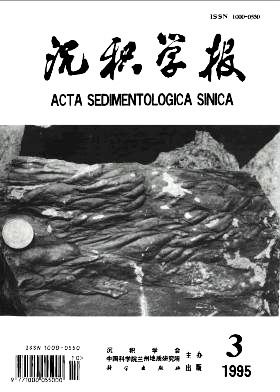Chen Daizhao, Chen Qiying. Dynamics of Sedimentary Evolution for the Early and Middle Devonian, Southern Guizhou[J]. Acta Sedimentologica Sinica, 1995, 13(3): 54-65.
| Citation:
|
Chen Daizhao, Chen Qiying. Dynamics of Sedimentary Evolution for the Early and Middle Devonian, Southern Guizhou[J]. Acta Sedimentologica Sinica, 1995, 13(3): 54-65.
|
Dynamics of Sedimentary Evolution for the Early and Middle Devonian, Southern Guizhou
- Received Date: 1994-02-10
- Publish Date:
1995-09-10
-
Abstract
Southern Guizhou region, a relative stable platform adjoined to an intrashelf trough (or basin) southward, was flooded by the rapid sea level rising in South China in the late Early Devonian (Middle Emsian).Terrigenous depositional systems (i. e. fluvial, barrier-lagoon systems) were developed in the late Early Devonian, and hybrid terrigenous/carbonate (rimmed platform or ramp) depositional systems with grand mixed cycles (or sequences) in the Middle Devonian. Spatial configurations(or distribution ) of depositional systems are formed in different sedimentary conditions (i. e. eustusy, tectonism,source supplies), they consist of (1) barrier-lagoon-fluvial complex systems, reflecting an early basin fill stage with abundant source supplies at a relative low sea level, (2) mixed carbonate ramp-siliciclastic barrier-lagoon complex systems formed after rapid sea level rising, (3) mixed rimmed carbonate platform-siliciclastic delta (or tidal) complex systems developed often in late sea level lowstands with a relative rapid subsidence rate at platform margin, and (4) mixed carbonate ramp-siliciclastic delta systems established after rapid sea level rising as (2). In southern Guizhou, the NW-SE extensional faulting zone determines the range of two absolutely different dePOSitional patterns of platform and intraplatform (or intrashelf) trough (or basin), and establishes the peleogeographic framework of sedimentary evolution.Six third-order depositional sequences including two terrigenous siliciclastic sequences in the late Early Devonian and four mixed cabonate-siliciclastic sequences in the Middle Devonian were recognized based on the sedimentary studies. The formation of the sequences is controlled largely by sea level changes.The terrigenous depeitional systems develop in the early basin-fill stage with abundant source supplies. The shoreline and fluvial besinward Ptogradation characterizes the lowstand of sea level. Withdrawal of the sea level below the depostiional break initially leads to the shelf exposure, fluvial incision, and formation of lowstand fans and wedges (progradational shoreline or delta deposits).The rapid sea level rising causes the shoreline to recede landwards swiftly and the semi-pelagic black shale to blanket the trailing edge of the shelf. During the highstand of sea level, the shoreline deposits that aggradationally stack in the early stage gradually change into the progradational coastal or deltaic plain deposits subsequently as the sea level begins to fall.In mixed carbonate-siliciclastic depositional systems, the sedimentary response to changes in relative sea level indicates that basinward transporting of elastics predominates the lowstand of sea level. The elastic materials are conveyed through the incised valley to the intrashelf trough (or basin), forming the lowstand fan and lowstand wedge. Sometimes, organic reefs are developed during the late lowstand (V, VI), and terminated by the rapid sea level rising. The rapid sea level rising leads the shoreline to retrograde quickly and causes intrashelf trough deposits (black shale,nodular limotone etc.) to onlap updip the depositional break. Continual sea level rising above the shelf (or platform) increases the accommodation space, which allows the resumption of carbonate production, hence, the carbonate deposits dominate over the early highstands. However, the siliciclastic systems on the proximal shelf begin to rejuvenate and to prograde basinwards during the late highstands when the accommodation space reduces.
-
References
|
[1]
|
1.王鸿祯等,1986,华南地区古大陆边缘构造史,武汉:武汉地质学院出版社。
2.叶德胜等,1983,贵州泥盆系碳酸盐沉积相,沉积学报,1(2);82-95。
3.叶德胜等,1985,贵州中泥盆统碎屑岩沉积相特征,岩相古地理文集(1),88-102,北京:地质出版社。
4.刘文均,1986,华南泥盆纪古构造轮廓,岩相古地理通讯,(5/6),1-11。
5.陈代钊,陈其英,1994a,黔南早、中泥盆世层序地层格架与海平面变化,中国科学(B),24(11):1197-1205。
6.陈代钊,陈其英,1994b,华南泥盆纪沉积演化及海水进退规程,地质科学,29(3):246-255。
7.陈洪德,曾允孚,1990,右江盆地的性质及演化讨论,岩相古地理,1辑.2837。
8.吴治等,1987,广西泥盆纪沉积相古地理及矿产,南宁:广西人民出版社。
9.周怀玲等,1985,广西环江泥盆纪生物礁,岩相古地理文集(1),103-121,北京:地质出版社。
10.张锦泉,郑荣才,1990,上扬子西南缘泥盆纪构造格局与岩相古地理,成都:成都科技大学出版社。
11.Ahr,W.M.,1973. Trans. Coast Assoc. Gaol. Soc.,23.221-225.
12.Burchette, T. P.,Wright, V. P.,1992, Sediment. Geol.,79.3-57.
13.Ginsgurg, R. N.,James, N. P.,1974, 1n, The Geology of Continental Margins (Eds Burke, C. A.,Drake, C. C),137-155.
14.James, N. P.,Mountjoy, E. W.,1983,In;Theshelf一break:Critical lnterface on Continental Margins (Eds Stanley, D. J.,Moore, G. T.),SEPM Spec. Publ.,33,189-206.
15.Johnson, J. G et al.,1985,Bu11. Geol. Soc. Amer.,96.567一687.
16.Johnson . J. G et al.1988. In,Ikvonian of the World(Eds Mcmillan, N. J. et al.),Vol. 11I. Canadian Soc. Petrol.Geol. Memoir.19.171-178.
17.Klein, G.Markello.devries. 1985, Sandstone Depositional Models for Exploration for Fossil Fuels.18.J. R.Read. J. F.1982, AAPG Bull.,66.860-878.
19.Mitchum, R. M. et al.,1977, In;Seismic Stratigraphy Applications to Hydrocarbon Exploration(Ed. Payton, C. E.),Mem. Am. Asso. Petrol. Geol.,26.53一62.
20.Read, J. F.,1982, Tectonophysics,81.195-212.
21.Read, J. F.,1985. AAPG Bull.,69.1-21.
22.Talent, T. A.,Yolkin. E. A.,1987, Gourier Forschungs lnstitute Senckenberg. 92.235-249.
23.Vail, P. R. et al.,1977, 1n;Seismic Stratigraphy Applications to Hydrocarbon Exploration (Ed. Payton, C. E.),Mem.Am. Also. Petrol. Geol.,26. 49-133.
24.Van Wagoner, J. C., et al.,1988. In;Se.一level Changes; An Tntcgrated Approach(Eds. Wilgus, C. K. et al.),SEPMSpec. Publ.,42.39-46.
25.Wright, V. P.,1986. Sedimentology, 33.221-241. |
-
-
Proportional views

-






 DownLoad:
DownLoad: